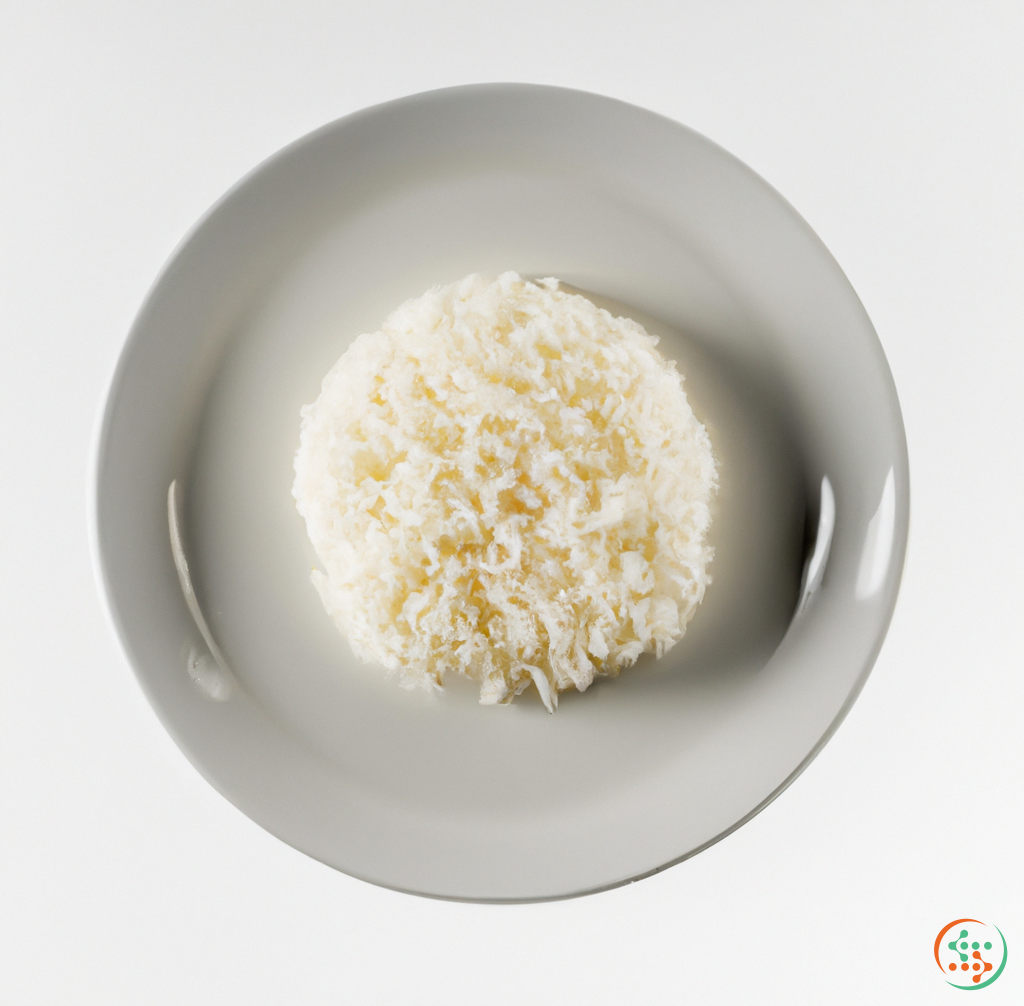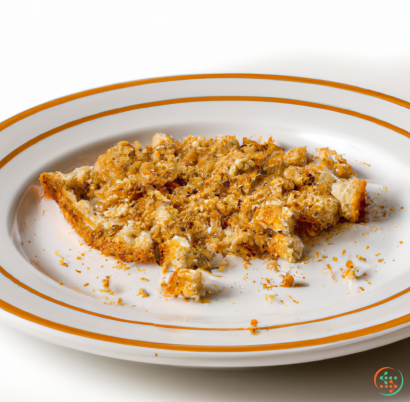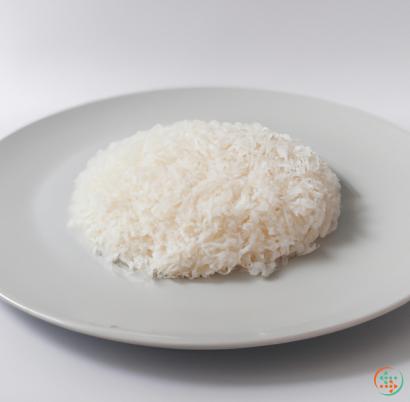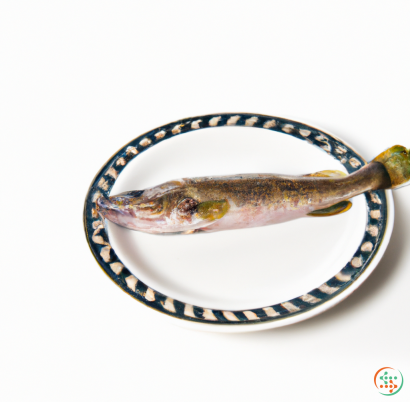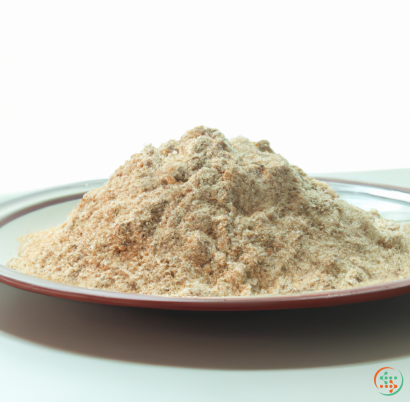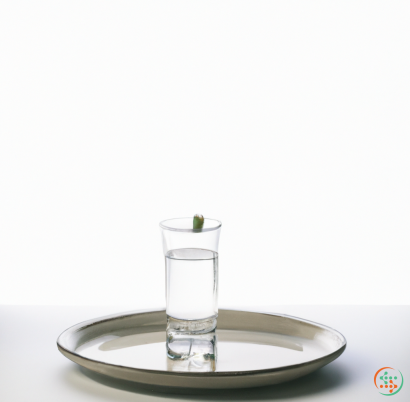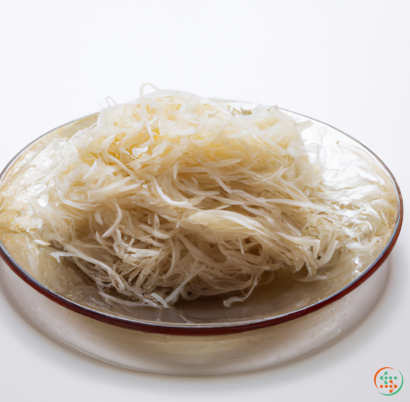Long-grain White Rice
Long-Grain White Rice: A Must-Have Staple for Many Dishes
Ah, long-grain white rice—the staple food of many cultures around the world. Rich in flavor and texture, white rice is a must-have for any cook’s pantry. Whether you’re making a savory Indian meal or a lightened-up version of Southeast Asian stir fry, long-grain white rice is typically the canvas in many flavorful dishes.
So, what exactly is long-grain white rice? Long-grain rice, like its name suggests, is a type of grain with long, slender kernels. Long-grain rice is also more resistant to breakage than other types of rice, making it a prime choice for meals that require a little extra structure, like curries and risottos. Compared to short-grain rice—which has shorter, fattier grains, much like Arborio risotto rice—long-grain white rice keeps its shape better and has a slightly firmer texture.
Unlike other varieties of white rice, long-grain white rice is typically steamed or boiled before it's sold to give it its light, fluffy texture. After it's cooked and cooled, long-grain white rice can be used as a side dish, base for soups and stews, stuffing for vegetables, and much more.
Because of its versatility and flavor, long-grain white rice is often used in international dishes. In India, long-grain white rice is a main player in both sweet and savory dishes, such as kheer (rice pudding) and biryani (a type of spiced rice dish). While in Southeast Asia, long-grain white rice is often used to make fried rice and noodle dishes. In Japan and China, long-grain white rice is most commonly served plain or as part of sushi.
When choosing the right type of long-grain white rice for your particular recipe, it’s important to consider how much moisture you need. For dishes with robust sauces and gravies, a more absorbent variety of long-grain white rice, like basmati rice, may be best. On the other hand, for lighter dishes, like stir-fries and salads, try a more fragile variety of long-grain rice, such as jasmine or sticky rice.
Generally speaking, long-grain white rice is much easier to cook than many of its counterparts, such as brown rice and wild rice. To get the perfect texture, use a ratio of one-part rice to two-parts water when boiling — more water gives you a softer texture, less gives you a firmer texture. Just be sure to bring it to a rolling boil and then reduce the heat to a simmer before covering and cooking for 15 minutes. Once cooked, allow the rice to rest, covered, for a few minutes, and it will be ready to serve.
Not only is long-grain white rice a convenient and delicious addition to any meal, it is also highly nutritious, too. Rich in complex carbohydrates, long-grain white rice keeps you fuller for longer and gives you sustained energy throughout the day. As long-grain white rice is low in fat and rich in essential vitamins and minerals, such as Vitamin B6 and folic acid, it is a great way to get extra nutrition into your diet without the added fat or calories.
Long-grain white rice is a reliable, nutrient-packed addition to any meal, adding additional flavor and texture to any dish. Whether you’re serving up an Indian feast or a healthy plant-based lunch, you can’t go wrong with a bowl of long-grain white rice.
Long-Grain White Rice: From Farm to Dinner Plate
Long-grain white rice is a staple food source for people around the world and has a long and fascinating journey between its cultivation and preparation on a dinner plate. Although the journey is largely hidden to end-consumers, understanding rice production and the stages through which it passes before being served provides an invaluable insight into the global food production and distribution network. This blog post examines each step of the long-grain white rice journey between its initial cultivation to it becoming part of a cooked recipe.
Growing Long-Grain Rice
Before long-grain white rice can travel to a dinner plate, it must first be grown in optimal conditions. Although this grain thrives in a variety of environments, it tends to be planted in areas where monsoons occur and where the soil is both fertile and free of disease, pests and weeds. The planting process is hugely labor intensive and involves flooding paddies (a specially constructed piece of land that is leveled to provide a watertight surface with irrigation channels) before manually planting the seeds and maintaining the water levels, often at various depths to enhance crop development.
Once planted, the weather and temperature of the area will largely dictate the grain’s growth cycle, which typically lasts from two to four months with a peak harvest window being eight to twelve weeks. As the rice develops, the fields require frequent care and attention and are regularly weeded and harvested by hand. During the harvesting stage, the stalks are cut close to the base, leaving an inch or two remaining so that the grain can fully develop.
Stage 1: Irrigation, Harvesting and Post-Harvesting
Once the rice is harvested and the paddies emptied, the next stage of the journey begins and involves a variety of post-harvesting steps that vary depending on the environment. However, some of the primary tasks prior to long-grain white rice reaching a dinner plate include irrigation and drying. Because much of the grain is harvested during the monsoon season, paddies need to be drained and the grain needs to be dried to a moisture content of around 11-14%, ensuring it survives the transportation process.
Another key element at this stage is the sorting process, which helps identify and remove any damaged grains and unclean grains, such as those affected by pests, foreign matter or weed seed. Once sorted and cleaned, the grain is conveyed to a storage facility, usually located close to the paddies so it can be easily transported.
Stage 2: Hulling and Polishing
Once the long-grain white rice has been transported to a processing facility and inspected, it is then subjected to a process known as hulling. This is the mechanical act of separating the grain into husk, bran and germ layers and produces a white rice, often referred to as ‘rough rice’. This process is relatively simple and involves using a series of rollers and/or polishers to break away the husk and outer bran layer. During this process, the grain also passes through dust and magnetized drums, which detect and remove any metal within the grain.
After the hulling process, the grain is subjected to a method known as polishing. This helps to remove any thin husk layers and remaining bran, producing what is known as white rice. This process often uses a rubber polisher and a series of screens, which sieve the grains and remove any impurities, such as grit, sand or stone.
Stage 3: Sorting, Milling and Packaging
Once the long-grain white rice has been polished it is then transported to a sorting facility and sorted into different sizes. The sizes are usually indicated by the length of the grain, with the largest grains being referred to as ‘extra long-grain’ and the smallest being ‘short-grain’. It is during this stage that quality control measures are employed, such as checking the color, moisture content and residual olive content of the grain.
After the sorting process is complete, the grain is then transported to the milling facility and the final steps of its journey. Once milled and packaged, code markings are applied to the product packaging, indicating the type of rice, its country of origin, the certification of the product and any additional processing or cooking steps that may have been carried out during packaging.
Stage 4: Shipping and Transportation
The next stage of the long-grain white rice journey is transportation and usually involves shipping the rice abroad for sale and distribution. Depending on the distance, rice is usually loaded onto large ships, trains, lorries or pallets and transported to the correct port and delivery point. Once the rice arrives at its destination, it can either be sold to large food retail chains or sent to local shops and supermarkets, ready for sale.
Stage 5: Cooking and Preparation
Finally, the last stage of the long-grain white rice journey is its preparation and cooking, a seemingly simple but incredibly important step that helps the grain reach its finishing point. There are a variety of recipes and methods for cooking long-grain white rice, which involve boiling the grain for several minutes and then simmering it for a further ten to fifteen minutes, allowing the grain to absorb the moisture and soften it. Once cooked, the rice can then be served as part of a variety of dishes and is usually accompanied by vegetables, meat, fish, sauces and herbs.
Conclusion
The journey of long-grain white rice from farm to dinner plate is a fascinating one with numerous stages, techniques and processes before it can grace a plate. Understanding and appreciating each step of this journey, from cultivation to cooking, helps us gain a greater appreciation of the sheer scale and complexity of the global food production and distribution network and the incredibly important role it plays in society.
| Vitamin E | 0.04 mg | |
| Vitamin B1 | 0.02 mg | |
| Vitamin B2 | 0.01 mg | |
| Vitamin B3 | 0.4 mg | |
| Vitamin B4 | 0.0021 grams | |
| Vitamin B5 | 0.39 mg | |
| Vitamin B6 | 0.09 mg | |
| Vitamin B9 | 0.003 mg |
| Calcium | 0.01 grams |
Daily Value 1.3 g
|
| Iron | 0.2 mg |
Daily Value 0.018 g
|
| Magnesium | 0.012 grams |
Daily Value 0.4 g
|
| Phosphorus | 0.043 grams |
Daily Value 1.25 g
|
| Potassium | 0.035 grams |
Daily Value 4.7 g
|
| Sodium | 0.001 grams |
Daily Value 2.3 g
|
| Zinc | 0.49 mg |
Daily Value 0.011 g
|
| Copper | 0.07 mg |
Daily Value 0.9 mg
|
| Manganese | 0.47 mg |
Daily Value 0.0023 g
|
| Selenium | 0.0075 mg |
Daily Value 0.055 mg
|
| Tryptophan | 0.031 grams | |
| Threonine | 0.096 grams | |
| Isoleucine | 0.116 grams | |
| Leucine | 0.222 grams | |
| Lysine | 0.097 grams | |
| Methionine | 0.063 grams | |
| Cystine | 0.055 grams | |
| Phenylalanine | 0.144 grams | |
| Tyrosine | 0.09 grams | |
| Valine | 0.164 grams | |
| Arginine | 0.224 grams | |
| Histidine | 0.063 grams | |
| Alanine | 0.156 grams | |
| Aspartic Acid | 0.253 grams | |
| Glutamic Acid | 0.524 grams | |
| Glycine | 0.122 grams | |
| Proline | 0.127 grams | |
| Serine | 0.141 grams |
| Total Sugars | 0.1 grams |
per 100g
|
| Palmitic acid (16:0) | 0.07 grams |
|
| Stearic acid (18:0) | 0.01 grams |
|
| Total Saturated fatty acids: | 0.08 g | |
| Oleic acid (18:1) | 0.09 grams |
|
| Total Monounsaturated fatty acids: | 0.09 g | |
| Linolenic acid (18:3) | 0.01 grams |
|
| Linoleic acid (18:2) | 0.06 grams |
|
| Total Polyunsaturated fatty acids: | 0.07 g | |
